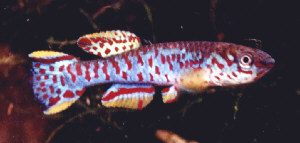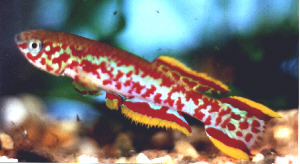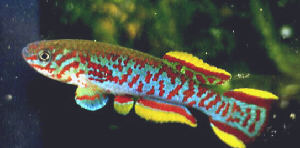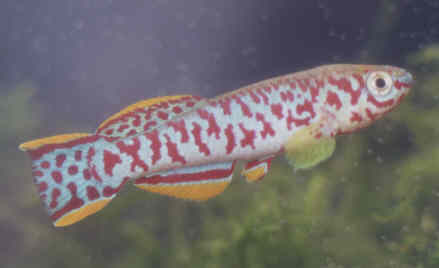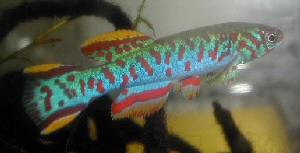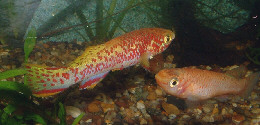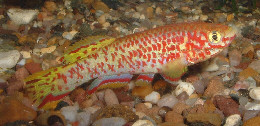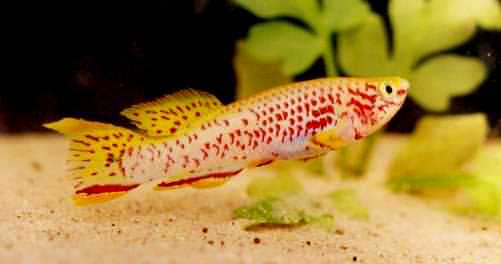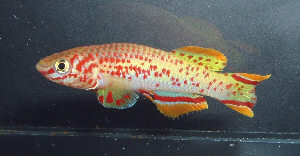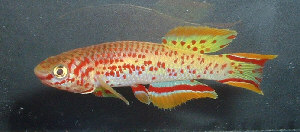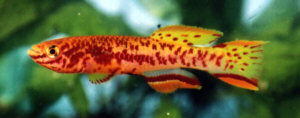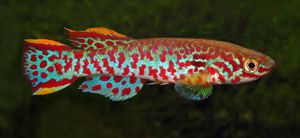Misajé
|
Codes
|
None known. | |||||||||||||
|
History
|
Collected by Radda on March 1st 1972. Entered the US hobby in 1975. In March 1982 I had 2 types of Misajé in my tanks. One type was very colourful with many red spots on a vivid blue background. The other form was from a Spanish import which I found very aggressive. Colouration was basically green with fewer red spots. Although it was circulated as Misajé I have my doubts that this was an accurate naming. Collected by Aubin, Dening & Lopez in 2013 (ADL 13). A link to the Stofmania site shows a video & more photo's. Currently only seen as a yellow phenotype although an albino form exists of this population. |
|||||||||||||
|
Habitat
|
Radda's 1972 collection were collected in a fast flowing mountain brook 2 metres wide & 10 - 50cm deep near Misajé which is located on the northern ring road from Bamenda - Banso - (Kumbo) - Nkambe - Wum returning to Bamenda. Water analysis, pH 5·9, DH 1, water temperature 20·9° C. Also found in pools on the edge of a stream near the road between Misajé - Ngong. These streams are tributaries of the Kimbi, Katsena Ala rivers flowing into the Benue River system. This is a mountainous area. Water analysis, pH 5·8, DH 1, water temperature 22·5°C, air temperature 24·C, humidity 60%. Data from the ADL 13 trip shows - water temperature 18 °C, pH : 6·99, Conductivity 25 µS.
|
|||||||||||||
|
Images
|
|
|||||||||||||
|
Traits
|
A form was circulated from Japan on Aquabid in 2009 as Misage - RK Blue. Don't know what 'RK' means but it looks the same as a normal Misaje to me. | |||||||||||||
|
Variability
|
The amount of red spots & there size can be variable. Generally the anal fin has a red bar but the photo below illustrates that they can throw out spots in this fin. Also, a gold form has been around for a number of years. Also, a Nsukka & Lafia (Fp.gardneri gardneri) has a gold form but these have small red spots in the anal fin & no red bar. | |||||||||||||
|
Notes
|
|
Tony Terceira sent me this photo of Misaje he took in 2008 in the USA. Note the spotted anal fin. I have never seen this in this population although it does happen in many other populations. | ||||||||||||
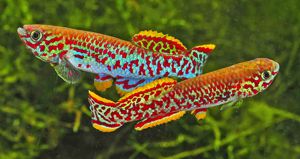 |
Misaje
taken 2009 - ADL 13 / 15. The fish in the rear
has a different anal fin pattern. Photo courtesy of Tony Terceira |
|||||||||||||
